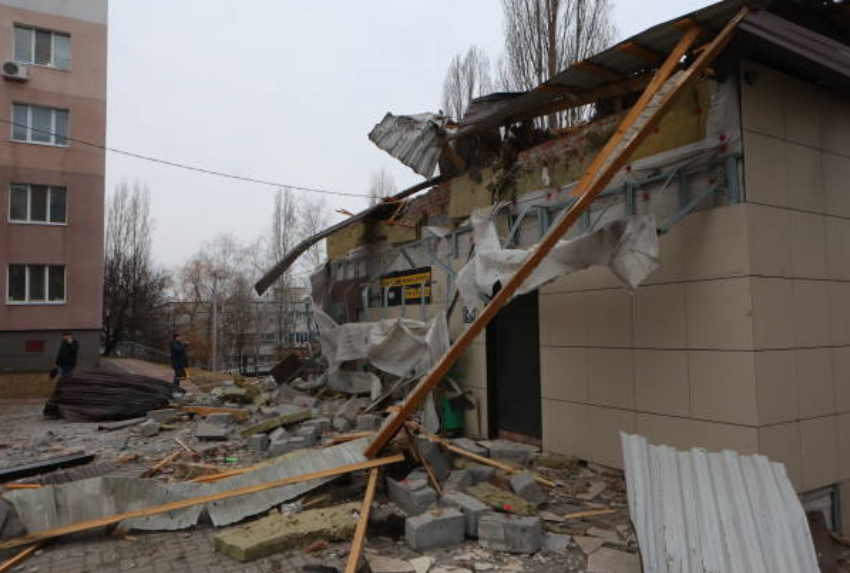Significantly, Ukrainian President Volodymyr Zelensky has openly admitted for the first time that Ukrainian troops are active in Russia’s Belgorod area. Saying, “We continue to carry out active operations in the border areas, and that is just—war must return to where it came from,” Zelensky said in a press conference explaining the continuous operations in the border areas. This comment unequivocally supports Ukraine’s military presence in Belgorod, a territory claimed by Russia as part of its own. This recognition has made news all around and signals a change in public opinion of Ukraine’s military policy.
Russia had earlier claimed, according to reports, that Ukrainian troops had tried to enter Belgorod; Kyiv did not confirm such claims. With Zelensky’s comment, the world formally acknowledges these cross-border activities now. The timing of these activities and their wider consequences for the continuous war between Russia and Ukraine imply that they are a fundamental part of Ukraine’s more general military plan. This public acknowledgment of the Ukraine Belgorod operation emphasizes the high stakes of the war and Ukraine’s will to protect her territory while confronting Russia on its land.
Zelenskyy’s remarks further emphasized the need for not only the Belgorod area but also the larger strategic background in which this operation is taking place. Such incursions, he said, have as their goals the safeguarding of Ukraine’s Sumy and Kharkiv areas and the relief of pressure on other front lines, particularly in the eastern Donetsk area. With Ukrainian forces reversing Russian advances in several locations, the conflict in Ukraine has seen notable changes in recent months; the situation in Belgorod is a part of this greater, continuous fight.
Why has Russia claimed cross-border attacks from Ukraine?
Russia’s military claimed that attacks had been turned back for several weeks, indicating attempts by Ukrainians to enter Belgorod. Russia claims that although Ukrainian troops sought to advance into the western section of Belgorod, especially in districts like Demidovka and Prilesye, these efforts were thwarted. Moscow says these cross-border incursions have been ineffective, but Zelensky’s admission of Ukrainian forces’ activities in Belgorod implies the situation might be more complex than Russia has stated.
Zelensky underlined in his speech that these actions were not only about increasing Ukrainian territorial control but also meant to impose pressure on Russian forces, so they were vital in defending the border areas of Ukraine. “We continue to carry out active operations in the border areas on enemy territory,” he said, therefore attesting to Ukraine’s larger defense strategy’s component of military actions. This is in line with past assessments of military analysts, who claimed that these operations were meant to compel Moscow to turn resources away from other important fronts, especially in Donetsk, where Russian forces have been making sluggish but constant advances.
Conversely, Russia has been firm in its denial that Ukrainian troops have made any appreciable advancement in Belgorod. Several Russian military bloggers and independent researchers have documented the battle close to Demidovka, a village just a few kilometers from the Ukrainian border, notwithstanding these assertions. These accounts imply that although Ukrainian forces might not have acquired significant territory, they have been visible in the area, therefore having strategic ramifications for both sides.
In what sense does the conflict in Belgorod relate to Ukraine’s defense strategy?
An important component of Ukraine’s continuous military strategy is Zelensky’s choice to candidly address Ukraine’s presence in Belgorod. Long said by the Ukrainian president is that the main objective of the nation is to preserve its sovereignty and territorial integrity, which entails safeguarding border areas such as Sumy and Kharkiv. The continuous activities in Belgorod are meant to act as a buffer between Ukrainian forces and the Russian military, therefore compelling Moscow to change its priorities and expenditure to protect its land.
Zelenskyy’s speech also underlined how crucial these operations are for relief to other sections of the front. Particularly in Donetsk, the continuous battle in eastern Ukraine has seen intense fighting whereby Russian forces make slow but consistent advances in some places. Operating in Belgorod and other areas of Russian territory, Ukraine hopes to reduce some of the pressure on Ukrainian soldiers in these hotly disputed regions. The president’s admission of the Ukraine Belgorod operation confirms this strategic approach even more since it shows that Ukraine is ready to bring the conflict into Russian territory to defend her land.
Apart from the military goals, these activities could also be strategically driven by the aim to acquire power in any upcoming peace negotiations. Given the war’s second-year approach, both sides most certainly already have ideas on how to handle post-war negotiations. Ukraine might be setting itself to negotiate from a position of strength by creating a military presence on Russian territory, hence possibly trading the territory it owns in Russia for its land under occupation by Moscow.
How has Russia responded to incursions by Ukraine?
Officially, Russia has been dismissive of Ukrainian incursions into Belgorod, asserting that all efforts to progress into its territory have been turned back. Less clear have Russian military bloggers and commentators been; some have claimed that Ukrainian forces have moved into Belgorod, especially in the Demidovka district. Though they have not been officially confirmed, these claims have spurred rumors that Ukraine might have established a presence here.
Russia claims to have effectively stopped Ukrainian progress, but the ongoing accounts of skirmishes and fighting close to the border point to a far-from-resolved situation. U.S.-based think tank The Institute for the Study of War (ISW) has also noted that Ukrainian troops have been active in Belgorod, with some sources implying that they have consolidated positions in particular regions. Though not significant compared to previous operations, the presence of Ukrainian military in Belgorod has grown to be a major source of conflict between Moscow and Kiev.
Particularly in the east, Russia’s military approach has been concentrated on recovering authority over areas lost to Ukrainian forces. But Ukraine’s military measures in Belgorod are hampering Russia’s attempts and forcing the Kremlin to redirect funds to guard its region. Particularly in the eastern areas where both sides are fighting for control, the cross-border activities have thinned Russian forces and further destabilized the situation.
Why is Ukraine’s presence in Belgorod essential for its war efforts?
Operations at Belgorod by Ukraine fit a larger military plan meant to undermine Russian forces and defend Ukrainian territory. There are several uses for Ukrainian military existing in Russian territory. First of all, it drives Russia to reallocate military resources and personnel away from other important regions, like Donetsk, where Russian forces have been progressively advancing. For Ukraine, this diversion of Russian resources is vital since it relieves front-line pressure in other areas.
Second, these excursions into Russian territory let Ukraine show its military might and its will to oppose Russia on its land. This strongly tells Russia and the world community that Ukraine is not only protecting its territory but also acting proactively to interfere with Russian military operations.
Furthermore, the activities in Belgorod can be a component of a more general plan to provide suitable conditions for the next peace negotiations. Should peace talks proceed, Ukraine might use the areas under control in Russia as negotiating chips to recover its own seized territory.
How Do Scholars See Ukraine’s Cross-Border Military Operations?
Military experts have disagreed on the success of Ukraine’s cross-border military activities. Some contend that Russia has to shift soldiers away from important battlefronts in Donetsk since the activities are strategically wise. Others, especially considering the heavy combat deaths recorded by both Ukrainian and Russian sources, wonder about the long-term efficacy of these assaults.
Furthermore, there are questions regarding the logistical difficulties Ukraine has keeping supply lines for activities on Russian territory. Though strategically vital, the Ukraine Belgorod operation carries some considerable danger. Notwithstanding these difficulties, many experts think that the larger military and political gains exceed the risks, particularly if the operations assist in reducing pressure on Ukraine’s other front lines.
Ukraine’s cross-border activities in Belgorod will probably always be a key component of its military approach as the battle goes on. Though things may always change in Belgorod, one thing is clear: Ukraine’s military presence in Russian territory is a bold declaration of defiance and an indispensable component of its continuous struggle for sovereignty.
Finally, Zelenskyy’s public admission of Ukrainian troops active in Belgorod marks a turning point in the war. This revelation not only clarifies Ukraine’s military policy but also indicates the continuous conflict escalation. Essential component of the larger military operations to protect Ukrainian territory, disturb Russian forces, and acquire leverage in any future peace talks is the Ukraine Belgorod operation. The consequences of these activities will be felt on the political as well as the military levels as the crisis develops.








